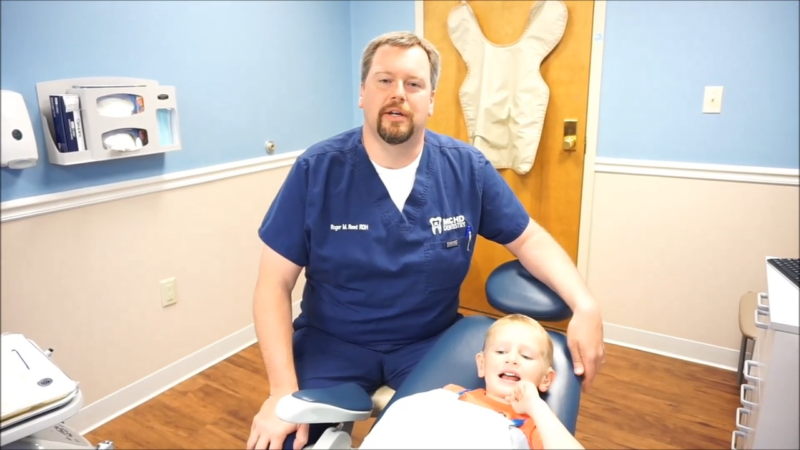Dental health is a big deal, especially for our little ones. Believe it or not, pediatricians start discussing dental habits even before that first tooth pops out! It’s not just about having a nice smile; dental issues can impact eating, speaking, and even self-esteem. So, keeping those tiny chompers in top shape is super important.
It’s one of those things that seems simple, but keeping tiny teeth healthy can be a challenge. As a parent, I’ve found that fluoride varnish is a lifesaver when it comes to preventing cavities and promoting strong teeth. Let’s break down everything about this treatment, so you feel confident and informed.
What Is Fluoride Varnish?
Fluoride varnish is a quick and effective treatment to help protect your child’s teeth. It’s a concentrated form of fluoride, the same stuff found in toothpaste and some tap water, but much stronger. It works by strengthening the enamel—the outer layer of the teeth—making it more resistant to cavities.
The varnish is painted on the teeth with a small brush, and it only takes a few minutes. The best part? It’s not a painful procedure, and it’s over before your child even has a chance to say “Ahh!”
When Should Kids Get It?
Once your child has their first tooth, it’s time to consider fluoride varnish treatments. Depending on the risk of cavities, it’s usually applied two to four times a year. If your child doesn’t have a dentist yet, no worries—many pediatricians are trained to apply the varnish during regular check-ups.
According to a study, fluoride varnish can be professionally applied every 3, 6, or 12 months for infants and young children.
How Fluoride Varnish Helps
Fluoride varnish helps fight against tooth decay. Here’s how:
- Prevents and Slows Down Decay: Fluoride varnish can stop cavities from forming and slow down any early signs of tooth decay.
- Strengthens Tooth Enamel: It makes the tooth surface tougher, which means fewer chances for those pesky cavities to take hold.
- Supports Good Oral Habits: When used along with brushing, flossing, and a healthy diet, fluoride varnish can help keep those teeth healthy and happy.
Is Fluoride Varnish Safe?
Absolutely! Fluoride varnish is used by professionals all over the world and is considered very safe for children. Only a small amount is applied, so there’s minimal risk of swallowing. It hardens quickly on the teeth and can be brushed off after 4 to 12 hours.
It’s worth mentioning that the varnish can temporarily change the color of the teeth, often turning them yellowish or dull. But don’t worry—this is totally normal and goes away once the varnish is brushed off.
The Application Process
The process is quick and straightforward:
- Preparation: Your child will sit in a comfortable position. If they’re younger, they might sit on your lap or lie back in the dentist’s or pediatrician’s chair.
- Application: The fluoride varnish is painted on the top and sides of each tooth using a small brush. It’s a bit sticky but hardens quickly when it comes into contact with saliva.
- All Done! It’s over in just a few minutes. If your child cries or wiggles, that’s okay—it actually makes it easier for the varnish to spread across the teeth.
Aftercare Tips
Right after the treatment, your child can eat and drink, but stick to soft, cool, or warm foods. Think applesauce, yogurt, or pasta. Avoid brushing or flossing the teeth for about 4 to 6 hours, or until the next morning if that’s what your provider suggests.
Establish Good Dental Habits Early On
Fluoride varnish is just one piece of the puzzle when it comes to dental health.
Start Brushing Early
Begin cleaning your child’s mouth even before their first tooth appears. Use a soft cloth to wipe their gums.
Use Fluoride Toothpaste
Once teeth appear, brush twice a day with a tiny smear of fluoride toothpaste (about the size of a grain of rice).
Flossing Matters
Start flossing as soon as your child has two teeth that touch. It may seem early, but it helps prevent decay between those tiny teeth.
Follow a Healthy Diet
Limit sugary snacks and drinks. Encourage water and milk instead of juice or soda.
The Role of Pediatricians and Dentists

Both pediatricians and dentists play crucial roles in your child’s dental health. Pediatricians often provide the first fluoride varnish treatments during check-ups. For children who may not have access to a dentist, this is a great way to get started with preventive care. But as soon as possible, establishing a “dental home” with a dentist is ideal.
The American Academy of Pediatrics recommends that all children should see a dentist by their first birthday.
Establish a “Dental Home”
A “dental home” means having a regular dentist who knows your child’s oral health history and can provide consistent care. Early visits can help prevent problems and get your child comfortable with the dentist’s office—no one wants a dental phobia!
High-Risk Kids: Extra Care Needed
Some children are at higher risk for cavities. Those who have early signs of decay, a family history of dental issues, or limited access to fluoride in their water may need more frequent fluoride varnish applications. In such cases, your pediatrician or dentist will provide guidance on the best schedule for your child.
Make Dental Health Fun
Encouraging kids to take care of their teeth doesn’t have to be a battle: make brushing a game. I used fun toothbrushes with my kids (PAW Patrol and Frozen, to be precise), and I let them pick out their favorite fluoride toothpaste.
Also, I can’t stress enough how celebrating small milestones, like losing a tooth or a good check-up, kept my kids excited about their oral health. So try it that way, make going to the dentist a pleasant and fun experience!
FAQ
Final Thoughts
Fluoride varnish is a simple, effective way to protect your child’s teeth from cavities. When combined with good dental habits and regular visits to the dentist, it sets the foundation for a lifetime of healthy smiles. Next time you’re at the pediatrician or dentist, ask about fluoride varnish—it might just become your secret weapon in the fight against tooth decay.

